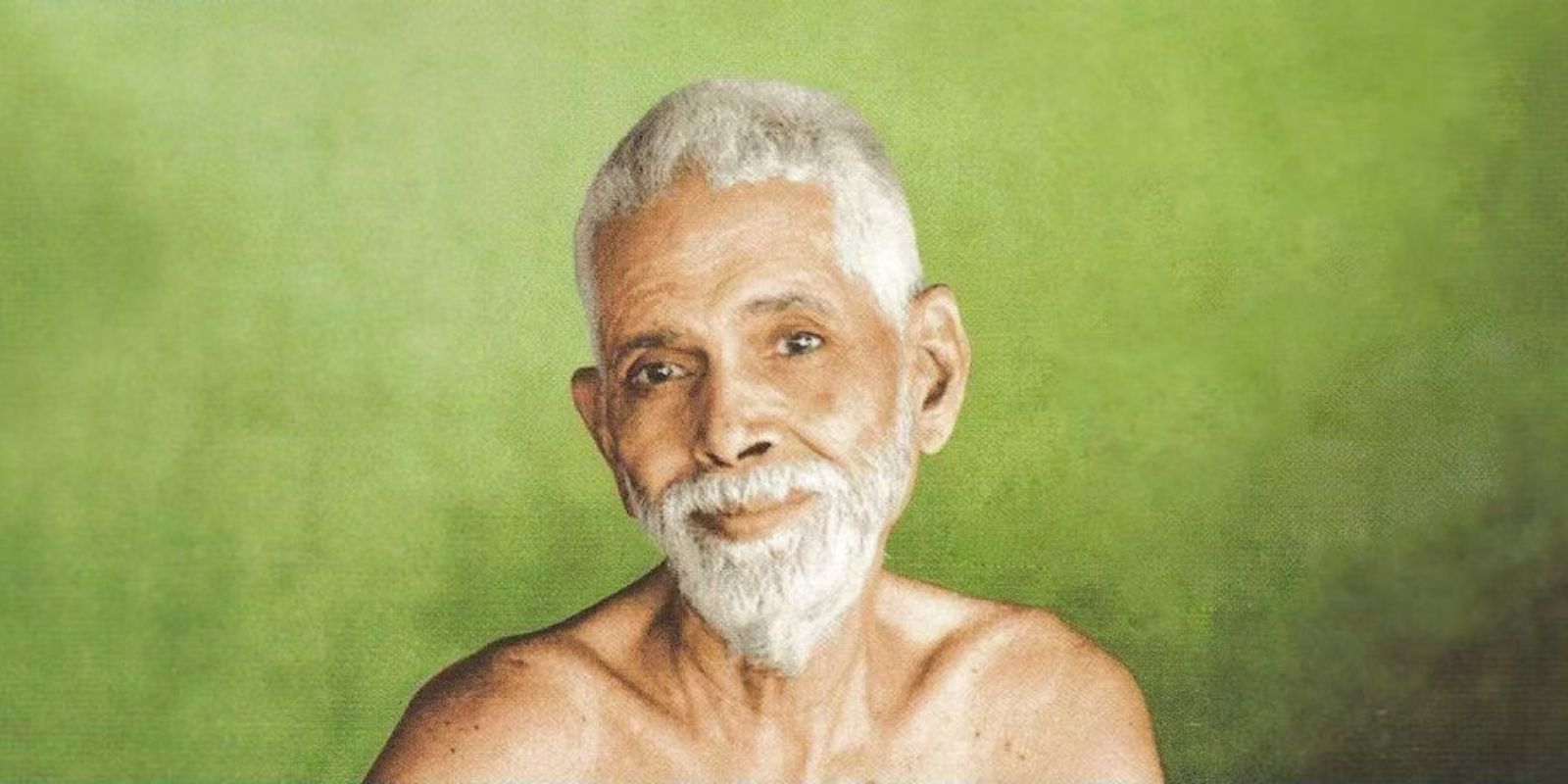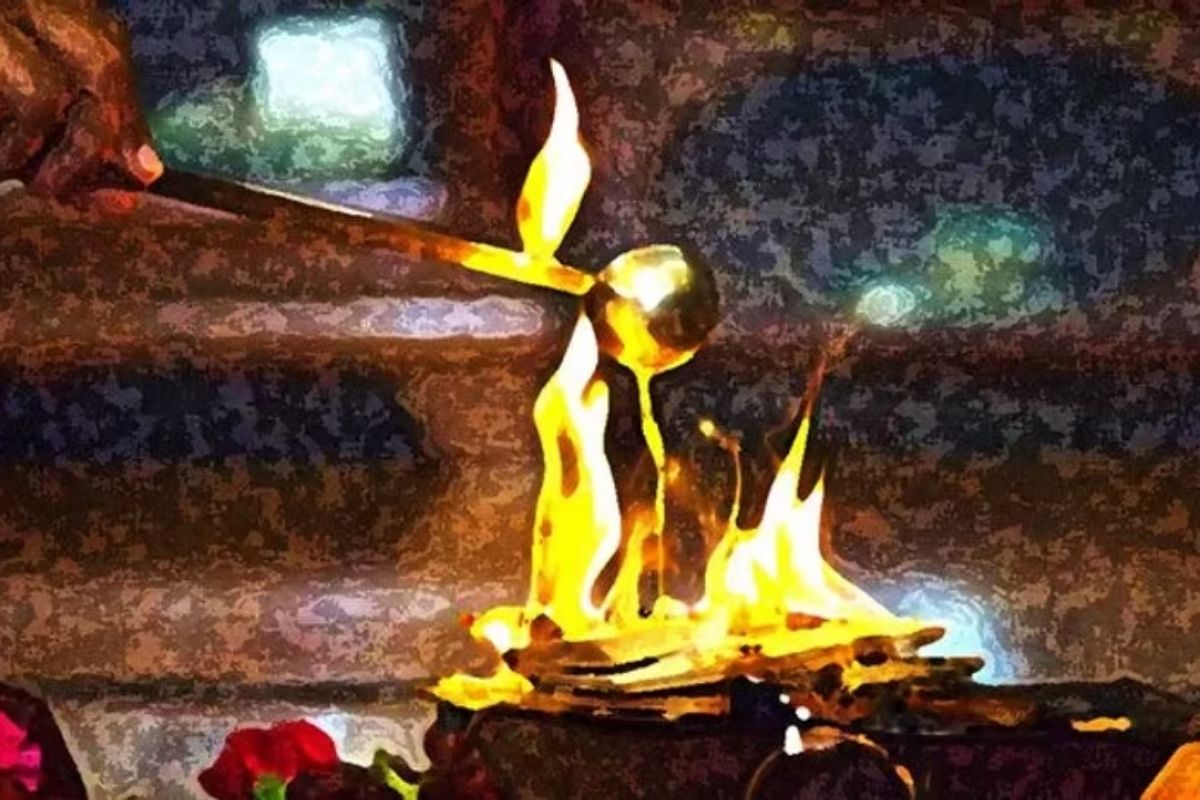Inquiry, Awareness, Liberation
In Chapter 18 after declaring the entire Gita to Arjuna the Lord gives him complete freedom ‘You now act as you choose’
This is remarkable – an enlightened teacher never imposes any teaching on a worthy disciple. Each one must reach the Lord by his own free choice. There is no compulsion. Having placed all the facts and figures in front of him, Lord Krishna asks Arjuna to make his own independent decision.

Wisdom helps you to discriminate between Sat & Asat.
The constantly changing forms are called “Asat”. They are non-existent in the sense that they have no ultimacy in themselves. They come and go. Once all the forms cease, they leave no residue, except “Sat” or the essence, the changeless being, the substratum on which all forms appear. This is Awareness, Witness of change.
Self-enquiry
Since our birth, everything around us and within us, has been constantly changing. Our bodies, our minds, and our surroundings continue to change. Yet, one thing has remained constant: the quiet sense of ‘I’ that runs through every experience we’ve had.
We say, “I feel,” “I think,” “I know”—but what is this ‘I’? Self-enquiry begins with this very question.
It invites the seeker to look within, directing their attention away from the changing aspects of the outside world and towards the everlasting essence of the Self.
The Upanishadic saying “Tat Tvam Asi” (Thou art That) resonates in the practice of Self-enquiry, emphasizing the deep understanding that the core of an individual’s soul is inseparable from the ultimate reality, the Supreme Brahman.

When the world which is what-is-seen has been removed, there will be realization of the Self which is the seer.
Sri Ramana Maharshi
If I am not this body and mind, then Who am I
The true Self is the very essence and substratum of all existence. This pure consciousness, often referred to as the Self or Atman, is the ultimate reality. It is beyond the body and mind. It is unchanging and ever-present.
The difficulty in understanding this lies in the fact that the mind, which is used to inquire, is itself a product of consciousness. The mind cannot fully comprehend consciousness. The part can never understand the whole.
This is like saying that the wave cannot comprehend the ocean, because it is a part of the ocean. The wave may recognize its form but not the vastness and depth of the ocean. In the same way, you may recognize your form, but not the formless that you truly are. It’s no wonder the human mind struggles to grasp what it is made of.
However, the key to realizing your true nature lies in inquiring into the very nature of the questioner with the ‘Who am I?’ question. Who is this ‘I’ that believes it is separate from the body and mind?
This process of Self-enquiry, as taught by Sri Ramana Maharshi, leads to a deeper understanding and experience of consciousness.
Through diligent Self-enquiry, the false identification with the body and mind dissolves, revealing the true Self – pure, unbounded consciousness. This realization is not an intellectual understanding but a direct experience of your true nature.
Self-inquiry (Atma-vichara), as taught by Bhagavan Ramana Maharshi, is regarded as the simplest and most direct path to Self-realization.
However, Self-inquiry is very subtle and can be hard to accomplish even after years of dedicated practice. It depends upon a great power of concentration and acuity of mind along with an intense longing for liberation. One might say metaphorically that Self-inquiry requires a certain flame. It requires that we ourselves become a flame and that our lives become an offering to it. Without such an inner fire, Self-realization may elude us whatever else we may attempt. Therefore, it is important to look at Self-inquiry not simply as a mental practice but as an energetic movement of consciousness like the rising up of a great fire.
Atma Yagna – Burning the Ego
The highest Yajna is the Atma-Yajna or Self-sacrifice in which we offer the ego into the Self. This is the also the highest form of meditation or the mind-sacrifice, as the ego is the root of the mind. For this Yajna, the Agni is the Atman or true Self in the heart. Self-inquiry is perhaps the ultimate form of this Atma-Yajna or Self-sacrifice, in which the ego can be directly consumed. It is also called the knowledge-sacrifice (Jnana-yajna) that proceeds through the power of the fire of Self-knowledge (Jnanagni)

The Flame in the Heart – The seat of the Self
The Vedas not only equate the Self with fire, they also equate the heart, which is the seat of the Self, with fire.
The Self is said to exist like a flame the size of a thumb in the heart. This small flame in the heart is the real person, power and presence that allows the body and mind to function. It is like the pilot light in a stove that lights all the other burners on the stove. The light of the Self lights all the other fires of the body, prana, senses and mind.
This flame of the Self sustains us through all our states of waking, dream and deep sleep and through the entire process of birth or death. Even prana or the life-force is but its manifestation or shadow. This flame leaves the body at death and carries the samskaras that propel us on to another birth.
This Self in the heart is clearly explained in the Narayana Sukta which states:
“In the middle of the heart is a great fire (Mahan Agni) that carries all light and looks to every side. It is the first eater and dwells apportioning our food, the undecaying seer.
He gives heat to the entire body from the feet to the head.In the middle of this fire is the subtle crest of a flame pointed upwards, shining like a streak of lightning from a dark blue rain cloud.
In the middle of the crest of this flame the Paramatman dwells. He is Brahma (Creator), Shiva (Transformer), Vishnu (Preserver), Indra (Ruler), OM and the supreme Lord.”
Ganapati Muni, Ramana’s disciple states that Agni Vaishvanara, who dwells in the cave of the heart, is indeed Ramana.
As the guru of the heart, Ramana did not put much emphasis on outer formalities. As the incarnation of the inner fire he showed how all teachings and practices could be consumed like fuel in the great fire of Self-knowledge.
And if you wonder why Ramana chose Thiruvanamalai as his Karma Bhoomi, the answer is evident. Thiruvanamalai is the seat of Lord Shiva as manifestation of Agni. In Tiruvannamalai, the Agni Lingam refers to the Shiva Lingam at the Arunachaleswarar Temple, which is associated with the element of fire (Agni) and is one of the five Pancha Bhoota Lingams.

